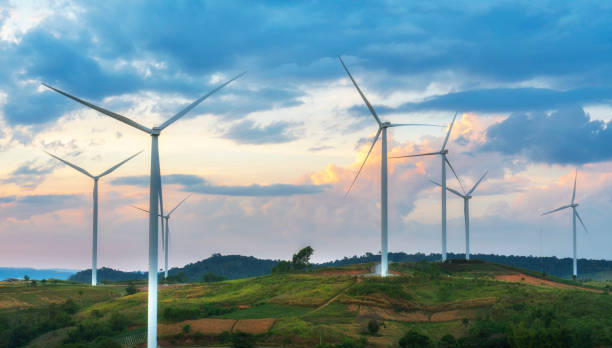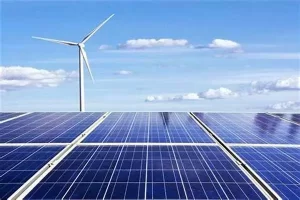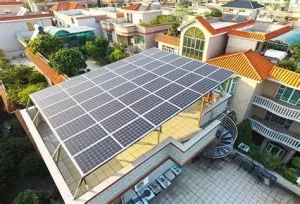Ngong Hills Wind Power Station: Pros and Cons
In the ever-evolving energy sector, the significance of renewable energy continues to grow. The Ngong Hills Wind Power Station in Kenya, as a prime example of renewable energy utilization, has made significant contributions to local energy supply and sustainable development. However, like any energy development method, the Ngong Hills Wind Power Station has its unique advantages and disadvantages, which are worth exploring in depth.

Advantages
Environmentally Friendly and Nature-Conserving
One of the most notable advantages of the Ngong Hills Wind Station is its environmental friendliness. Unlike traditional fossil fuel power generation, wind power does not produce large amounts of greenhouse gases, sulfur dioxide, nitrogen oxides, or other pollutants during the generation process. It does not cause air pollution, acid rain, or other environmental problems, which is crucial for protecting our planet, mitigating climate change, and achieving sustainable development goals. Additionally, it helps protect local ecosystems by reducing disruption to wildlife habitats and maintaining biodiversity.
Inexhaustible Energy Resource
Wind energy is a renewable resource that will continue as long as atmospheric circulation exists on Earth. The Ngong Hills region is endowed with abundant wind resources, and the wind power station leverages this natural advantage to convert endless wind energy into electricity. Unlike limited fossil fuels such as coal, oil, and natural gas, the renewable nature of wind energy alleviates concerns about energy depletion, providing a solid foundation for long-term stable energy supply.
Short Construction Period and Rapid Deployment
Compared to traditional thermal power stations or nuclear power plants, the construction period for the Ngong Hills Wind Station is relatively short. From project planning, equipment procurement, to installation and commissioning, it generally takes only 1 to 2 years to complete. This means wind power stations can be operational more quickly to meet the growing local energy demand, providing timely power support for economic and social development. Moreover, the shorter construction period helps reduce project investment risks and improve the efficiency of fund utilization.
Flexible Layout and Adaptability to Diverse Needs
The Ngong Hills Wind Station’s installed capacity is highly flexible and can be reasonably planned and designed based on local wind resource conditions, power demand, and topography. Whether it’s a large-scale wind farm or small distributed wind power systems, suitable application scenarios can be found in the Ngong Hills region. This flexibility enables wind power to better meet the energy needs of different regions and users, offering the possibility of diversified energy supply.
Gradually Reducing Costs and Increasing Economic Benefits
With continuous technological advancements and the development of large-scale production, the cost of wind power generation has shown a decreasing trend in recent years. At the Ngong Hills Wind Station, advanced wind power technology and efficient equipment have continuously improved generation efficiency while reducing operational and maintenance costs. In the long run, the cost of wind power generation will become comparable to, or even more economically competitive than, traditional energy sources. This helps reduce local energy costs, improve energy utilization efficiency, and provide substantial economic returns for investors, thereby promoting local economic development.
Disadvantages
Unstable Power Generation and Impact on the Grid
The intermittent and random nature of wind energy is one of the main challenges facing wind power generation. Due to the constant changes in wind speed and direction, the output power of the Ngong Hills Wind Station fluctuates, leading to unstable power generation. This unstable power output poses significant challenges for grid dispatch and operation, potentially impacting the stability and reliability of the power grid. To address this issue, appropriate energy storage systems or collaboration with other stable power generation methods are needed to ensure smooth grid operation.
Large Land Area Requirement and Limited Land Resources
To fully utilize wind resources, the Ngong Hills Wind power Station needs to install a large number of wind turbines, which requires substantial land resources. Moreover, to ensure the safety distance and good ventilation conditions between wind turbines, the layout of the wind farm also requires adequate space. In areas with limited land resources, this may lead to competition and conflicts over land use, affecting local land use planning and the ecological environment.
Noise and Visual Pollution
Wind turbines generate some noise and vibrations during operation. Although modern wind power technology has made significant progress in noise reduction, there may still be some noise disturbance for nearby residents. Additionally, the presence of numerous wind turbines in the Ngong Hills region may impact the natural landscape and visual aesthetics, which can be a concern for areas that value ecological and tourism potential.
Impact on Birds
The Ngong Hills region may serve as a migration route or habitat for birds. The construction and operation of wind turbines may cause collisions and disturbances to birds. Birds may collide with rotating blades during flight, leading to injury or death. Moreover, the construction of wind farms may destroy bird habitats and feeding grounds, adversely affecting bird survival and reproduction.
High Initial Investment and Financing Difficulty
Constructing the Ngong Hills Wind Power Station requires significant funds for purchasing wind turbines, building transmission lines, and supporting infrastructure. Additionally, due to the relatively long investment recovery period and higher risks associated with wind power projects, financing can be challenging. This, to some extent, limits the large-scale development of wind power projects, requiring government policies and financial subsidies to attract more social capital into the wind power sector.
In summary, the Ngong Hills Wind Power Station, as a method of renewable energy utilization, offers numerous advantages such as being clean, renewable, having a short construction period, and flexible layout, contributing significantly to local energy supply and sustainable development. However, we must also acknowledge its drawbacks, including unstable power generation, large land area requirements, noise and visual pollution, impact on birds, and high initial investment. In future development, we need to enhance technological innovation and policy support, continuously optimize wind power technology and management, fully leverage its advantages, overcome its disadvantages, and make wind power a more reliable, economical, and environmentally friendly energy source, driving sustainable development for humanity.
Contact us
- Email:[email protected]
- Tel: +86 13651638099
- Address: 333 Fengcun Road, Fengxian District, Shanghai
Get A Quote Now!

Read more

Unveiling Photovoltaic+Energy Storage: Four Major Application Scenarios Leading the Future of Energy
In this way, the energy landscape is evolving, and one of the most thrilling developments in renewables is the integration of photovoltaics energy storage.

From Theory to Practice: Four Methods for Estimating Photovoltaic Power Generation
Photovoltaic power generation has become an essential part of modern energy solutions, particularly in home solar systems and distributed power applications

Rack-Mounted Lithium Iron Batteries: Creating Efficient and Reliable Energy Storage Solutions
When it comes to modern energy solutions, rack-mounted lithium iron batteries are taking center stage in a variety of industries. Whether you’re powering data centers, stabilizing energy for households, or keeping critical systems online at 5G base stations, these batteries have become the unsung heroes of our electrified world.

Late Night Energy Saving Tips: How to Maximize Electricity Savings During Off-Peak Hours
With rising energy costs, homeowners are increasingly exploring innovative ways to save on their electricity bills. One effective approach is utilizing off-peak hours—times when electricity rates are significantly lower due to reduced demand.
